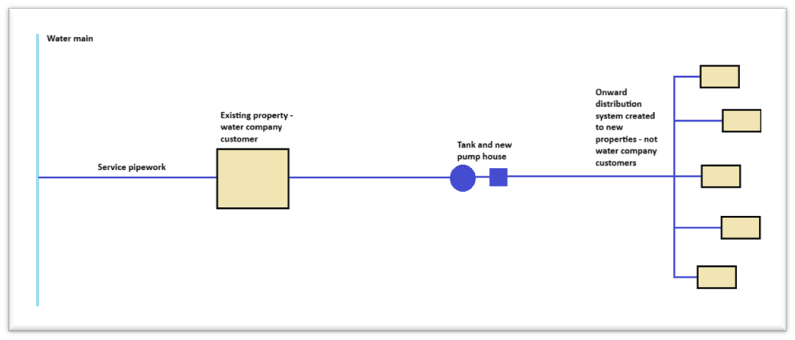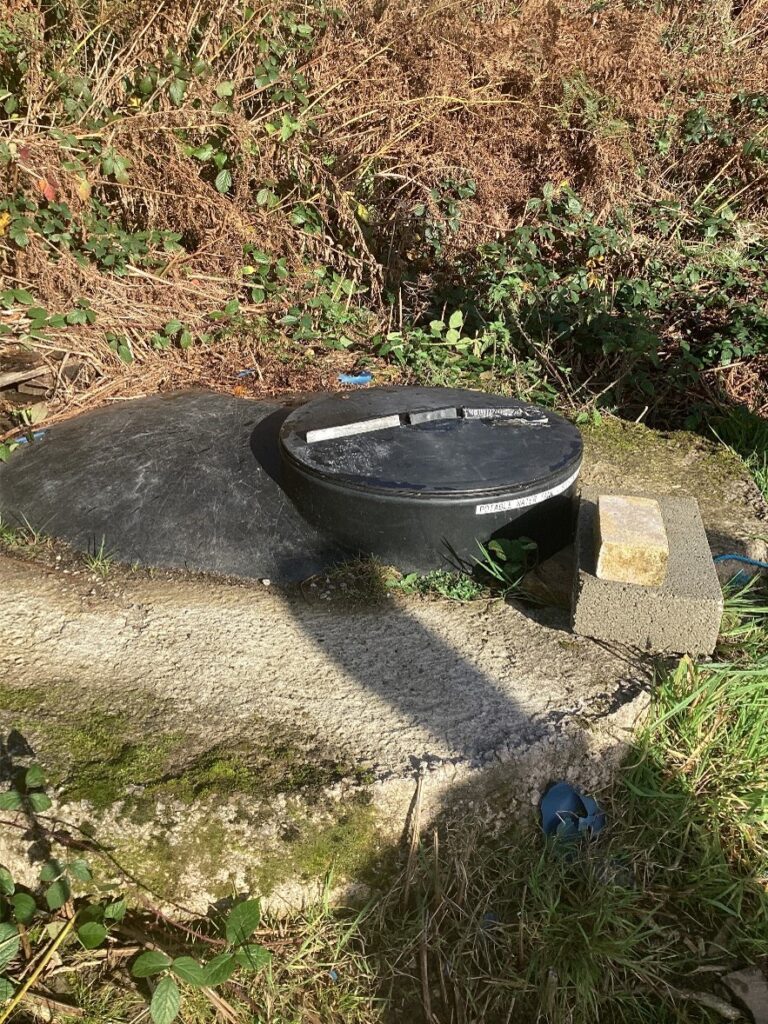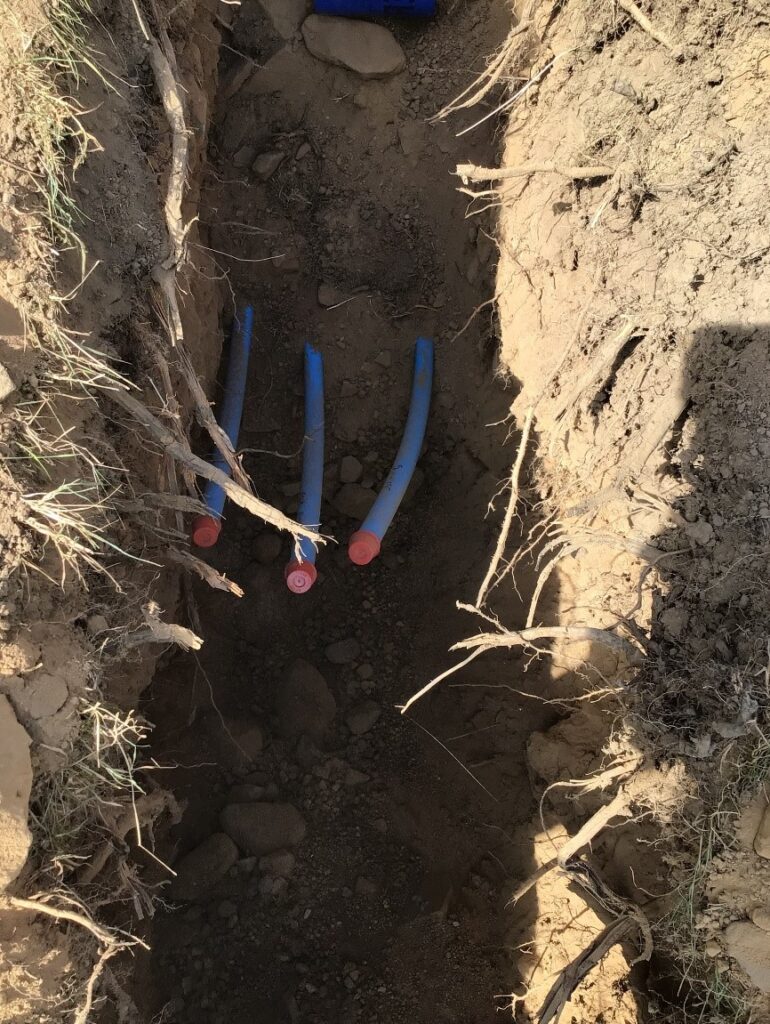Identification of a regulation 8 supply during a water quality event
Water quality event
In October 2024, a consumer in Wales contacted the local water company (‘the company’) reporting a “musty” odour emanating from their water supply. Initial checks by the company noted that whilst there were numerous properties at the location, they only had a sole property registered as a customer. Indeed, it quickly transpired that the consumer reporting the abnormal odour was supplied by a private (onward) distribution system from the property with a mains water connection. Regardless, the company took a set of samples, initially at the original complainant property, and subsequently at all neighbouring properties on the private distribution system. The laboratory confirmed a “farm-like” odour in two of the samples taken. The company responded by issuing ‘Do Not Drink’ advice; it was at this point that the Inspectorate was notified of a water quality event, with the local authority also being informed.
Investigation
The company conducted inspections under the Water Supply (Water Fittings) Regulations 1999 (‘Fittings Regulations’) and identified infringements against the on-site water storage and private distribution system.
Previously, a hotel had operated on the site, this hotel used a large volume (5 m3) storage tank to manage its on-site water requirements. A developer had acquired the site and recently built additional properties on it (see figure 1 for site schematic). Crucially, whilst an application for new direct connections to the company mains had initially been made, it was not taken forward by the developer, this was likely due to the costs involved in obtaining direct connections. Instead, the large volume tank had been kept in place with a new pump set installed (see figure 2 below) which onwardly distributed water from the tank to the new properties. This created a regulation 8 supply, which is an offence under section 66I of the Water Industry Act 1991 (‘the Act’).

Figure 1: Schematic of supply arrangement at the time of the water quality event.
However, the company did not initially consider the arrangement to be a regulation 8 supply, as creation of new regulation 8 supplies constitutes an offence under the Act (see regulation 8 information note). The company had been consulting with the local authority regarding potential private supplies in the area and communicated this erroneous judgement to them.
Subsequently, the company used an infringement notice to require the replacement of the storage tank with a smaller, compliant tank, incorporating the necessary air gap in the tank/pump arrangement to ensure appropriate backflow protection. The turnover in the 5 m3 tank had been inadequate against the water usage of five properties. The replacement 1 m3 tank was compliant with the Fittings Regulations and the reduced capacity improved water turnover and therefore water quality; the company then lifted the ‘Do Not Drink’ advice following satisfactory resamples.

Figure 2: Below ground water storage tank.
Further work
Whilst a smaller-volume, fittings-compliant tank had been installed, this was an interim measure whilst consideration was made regarding direct mains connections for the new properties. The company considered the use of a section 75 notice under the Act to require the relevant persons to apply for direct mains connections. In this case the use of further notices was deemed unnecessary, as the developer cooperated with the company investigation and indeed made an application for the direct connections. After further investigation and pressure monitoring, new service pipes were laid to directly connect the properties to the mains water network (see figure 3 below); subsequently the regulation 8 private water supply was removed.

Figure 3: Trench with new service pipe for direct mains connections.
Conclusions and learning
Regulation 8 private water supplies (onward or private distribution systems) are often encountered by water companies as part of their statutory duties. Whilst the creation of new regulation 8 supplies constitutes an offence under the Act, their formation creates a private water supply regardless and must be regulated by the local authority once they have been made aware of it. The private water supply regulations give these consumers (which are not water company customers) protection in the interests of public health.
As part of the investigation, the company quickly identified the presence of the private distribution system but advised the local authority that they did not consider it a regulation 8 supply. The company interpretation has since been clarified, in part due to the Water Health Partnership in Wales, which aims to set a consistent approach to regulating regulation 8 supplies. Where suspected or identified, liaison between the water company and the local authority is an important part of the work to remediate the arrangement, and also to afford regulatory protection to the consumers under the private water supplies regulations. Likewise, where a local authority identifies a regulation 8 supply, it is considered good practice to engage with the relevant water company as part of the risk assessment process. Although these supplies are private water supplies, their direct connection to the company’s infrastructure means the water company retains certain responsibilities and enforcement powers under the Fittings Regulations. To safeguard their network, the company may issue infringement notices to address any non-compliance with these regulations.
Furthermore, this case study emphasises the potential water quality risks posed by regulation 8 supplies, both to those served by them and consumers on the wider company network.
Water supply arrangements must be considered during the planning phase of any new developments, to ensure the supply is both sufficient and compliant with legislation. In this case, the development received planning approval from the local authority, yet neither the planning application nor later building inspections probed the precise nature of the water supply system. The Inspectorate recommends that local authority planning and building regulations teams are made aware of the issues surrounding the creation of onward distribution systems from a mains water supply, primarily that it constitutes an offence under the Act. If the local authority had insisted on direct mains connections at the planning stage, the illegal network and the extensive subsequent remediation could have been avoided.
Photos shown in figures 2 and 3 courtesy of the water company inspector.
